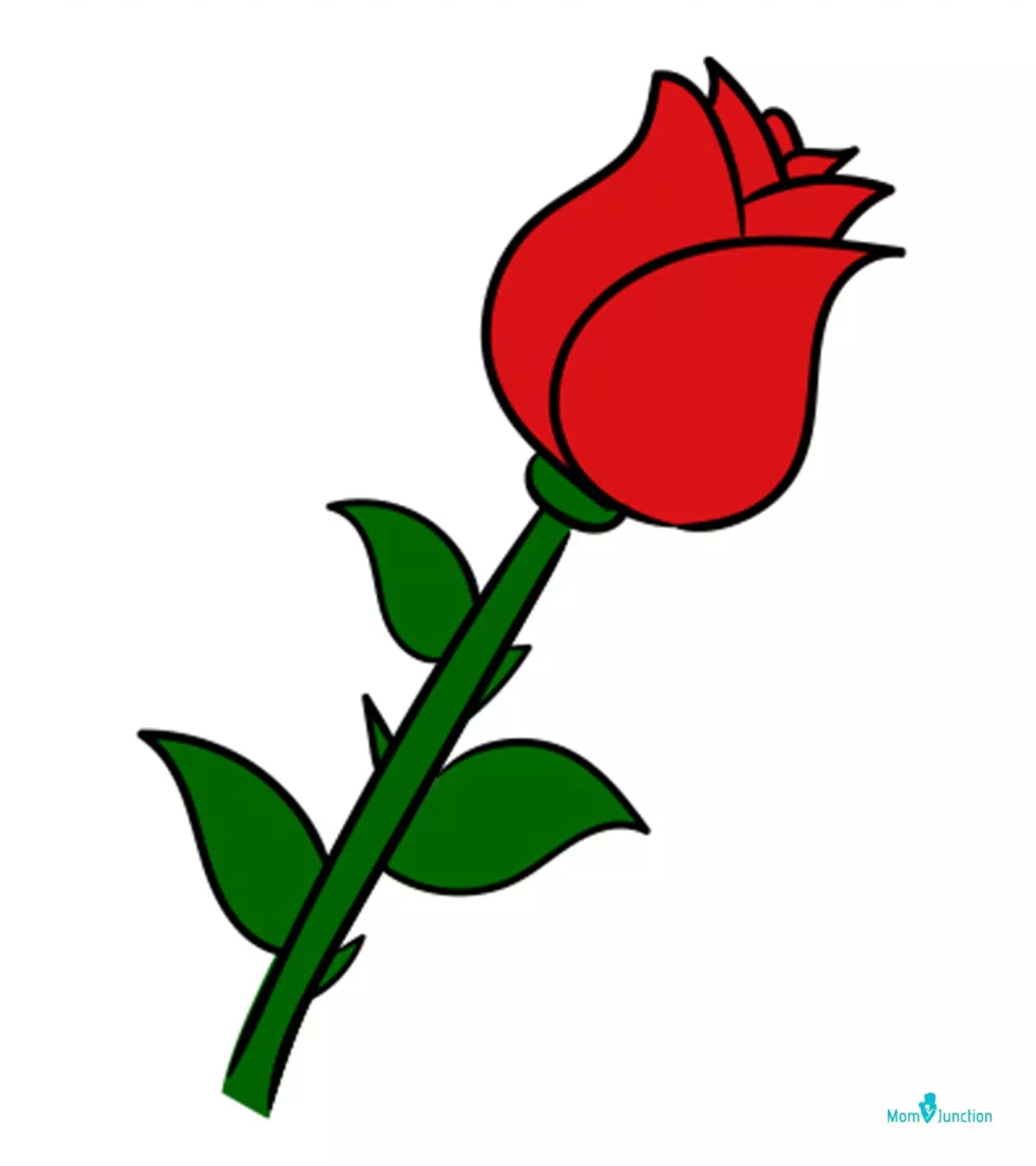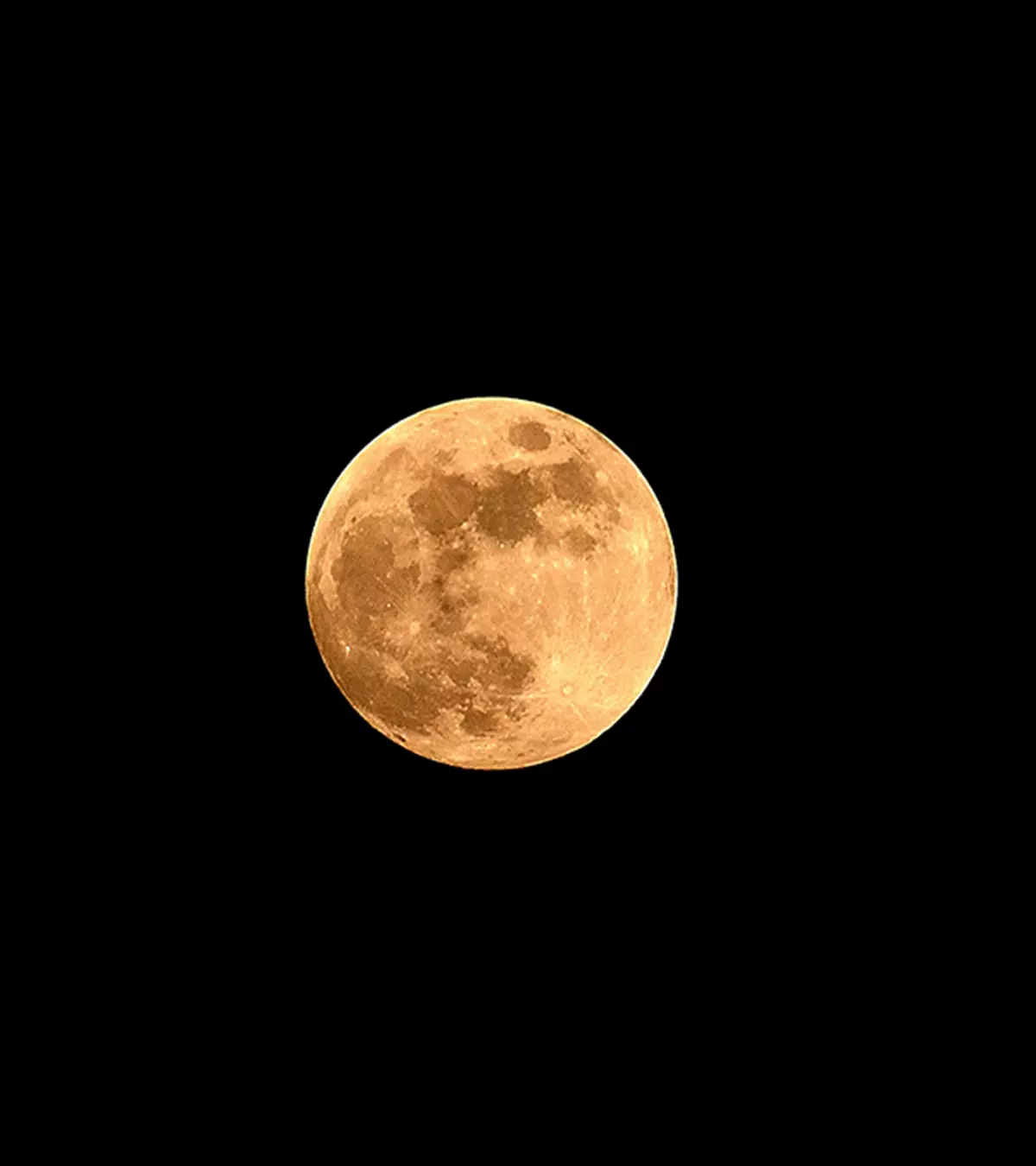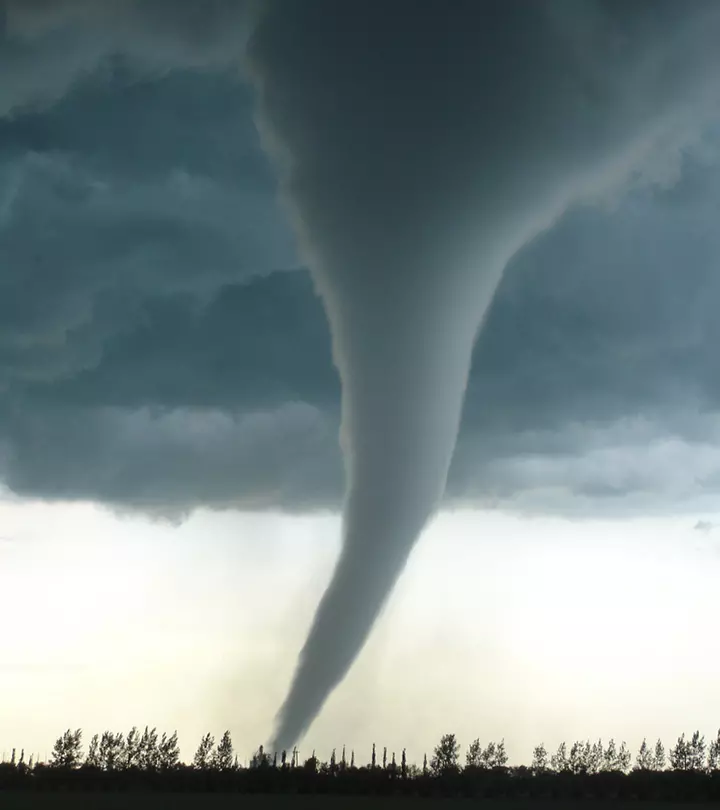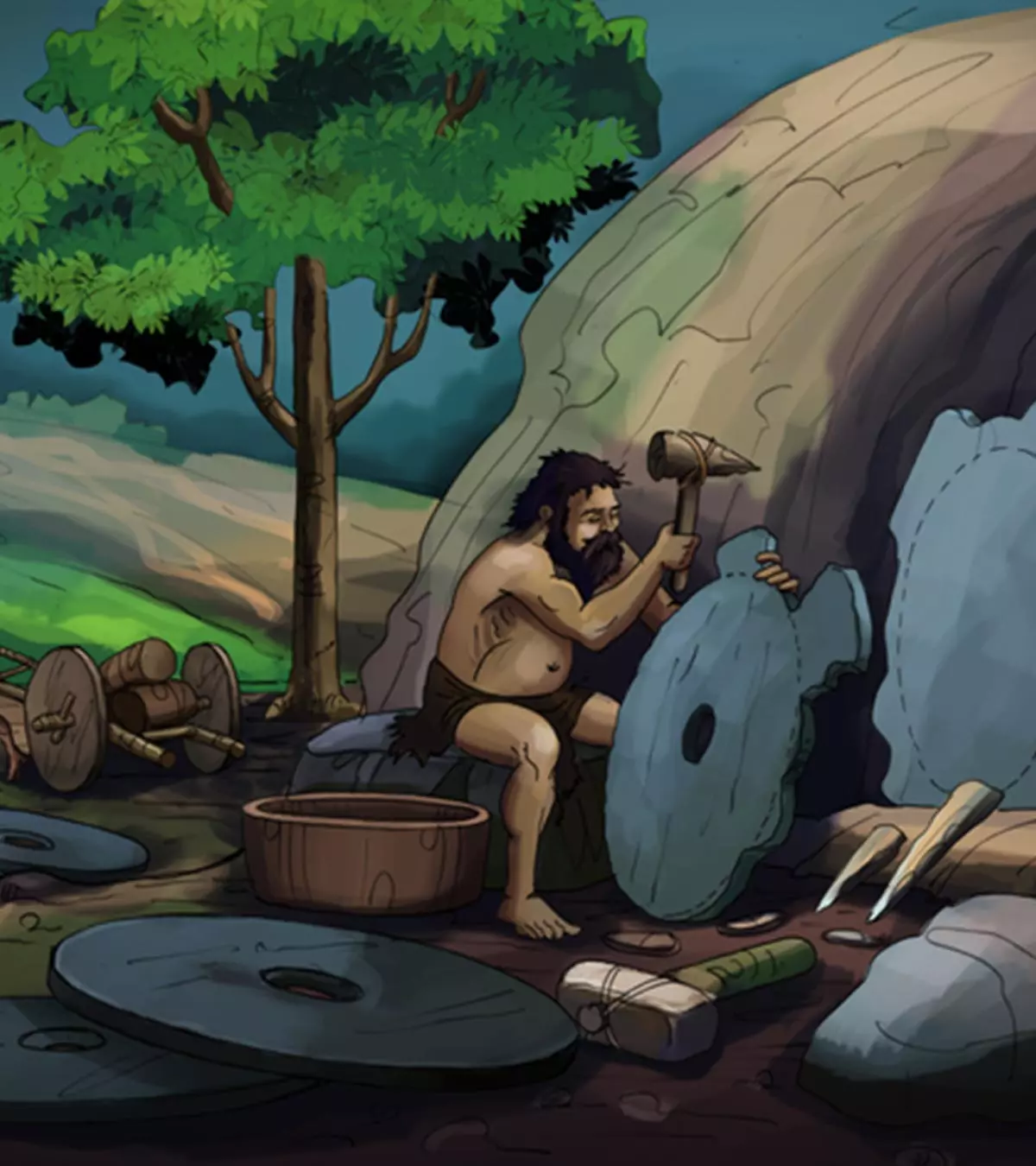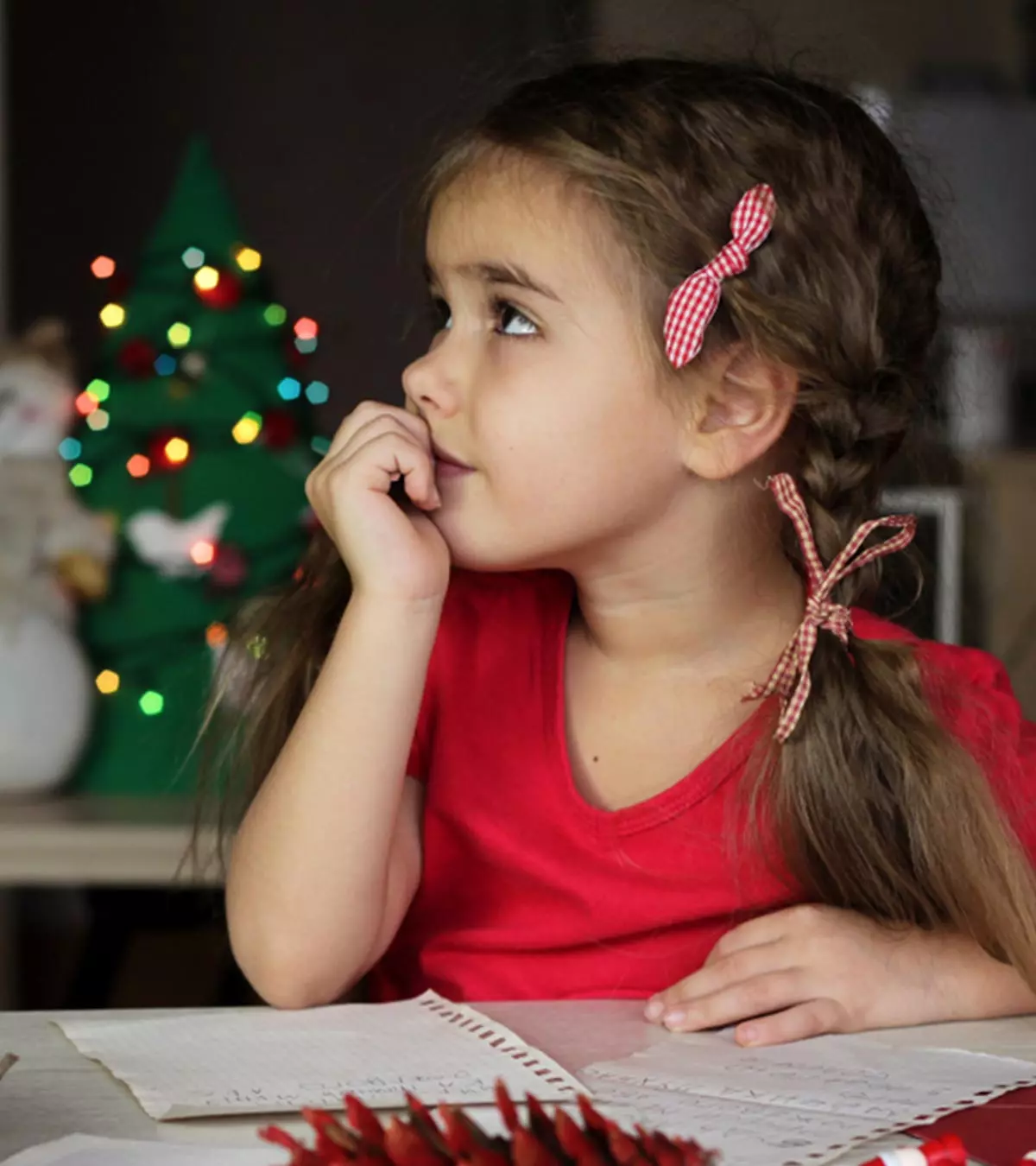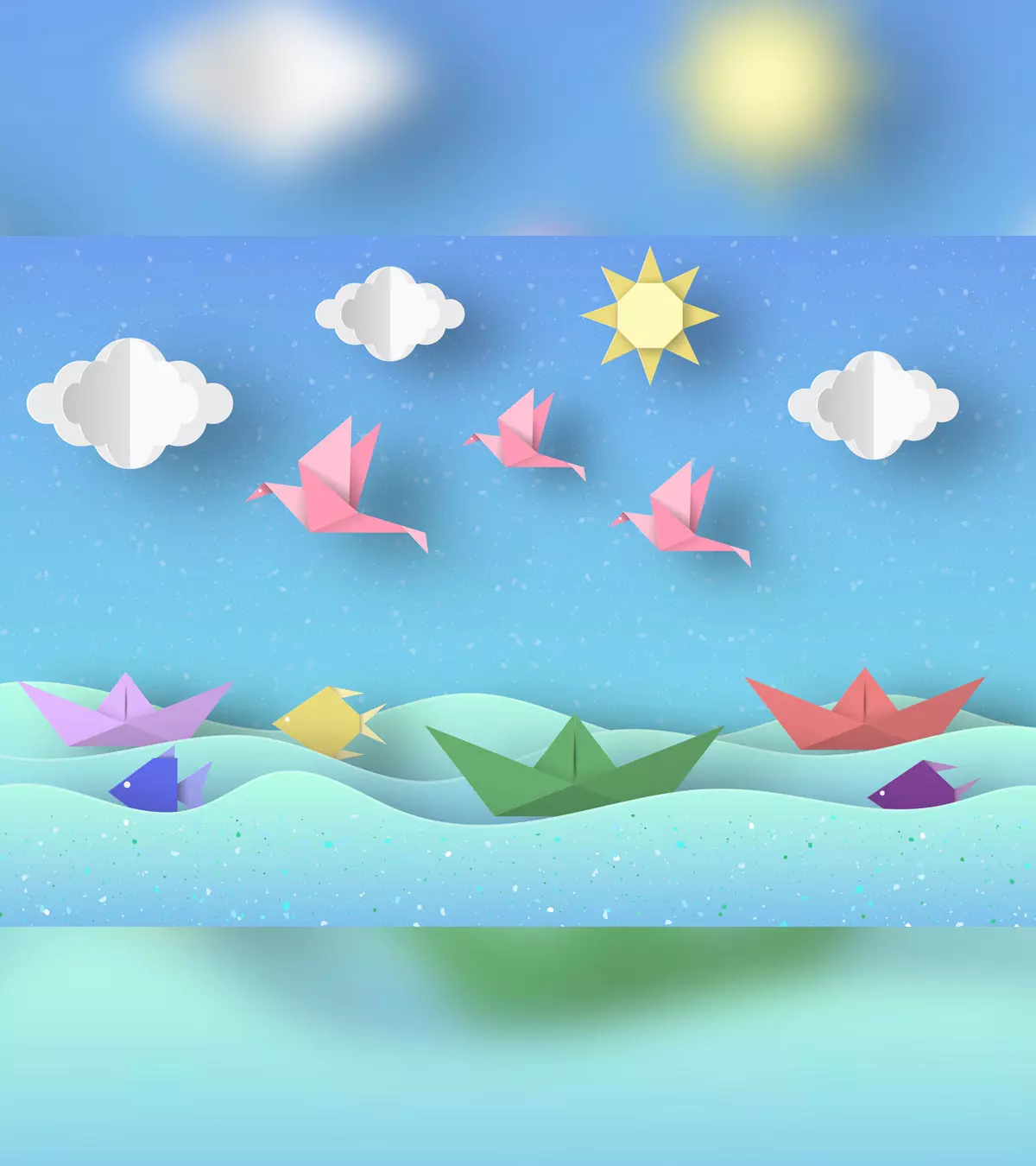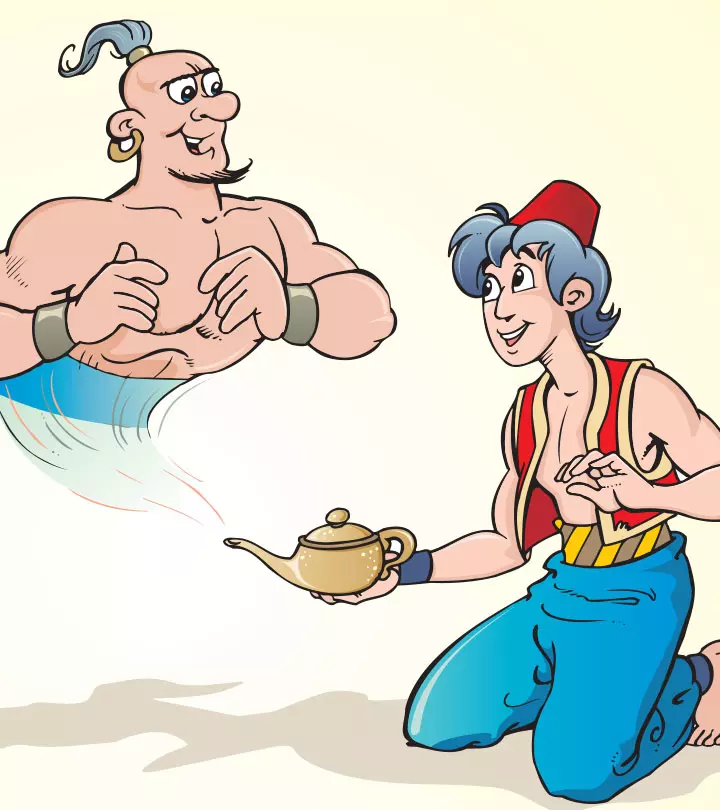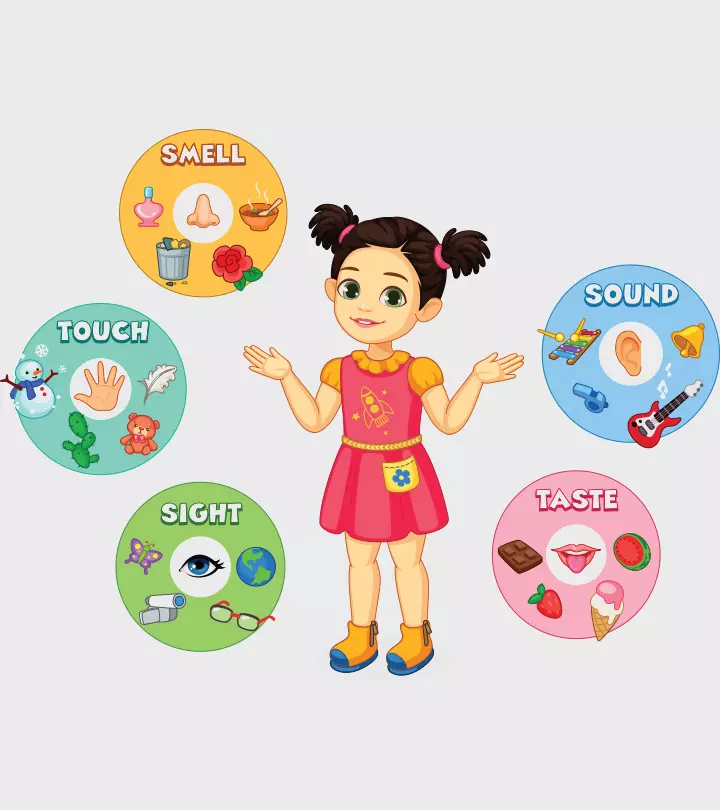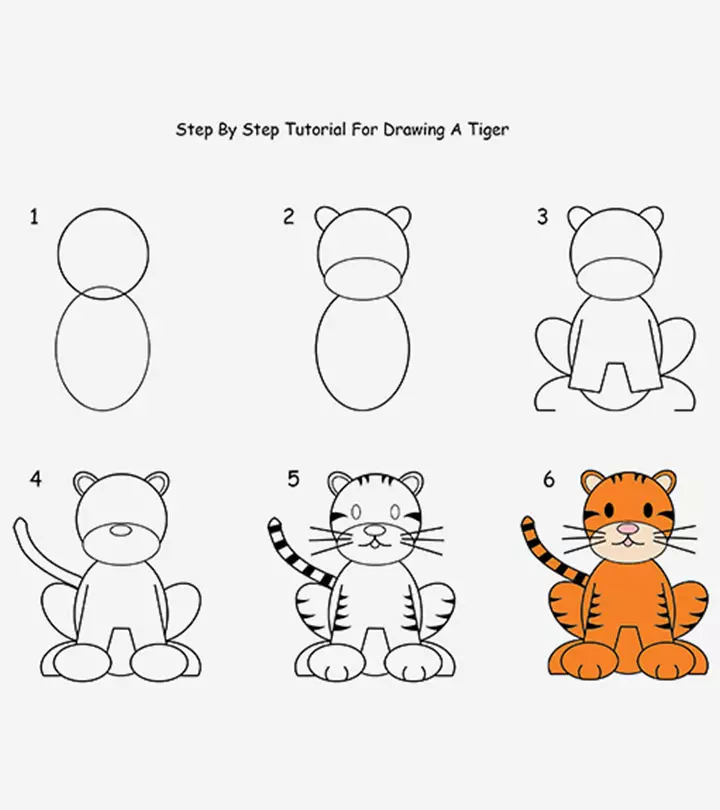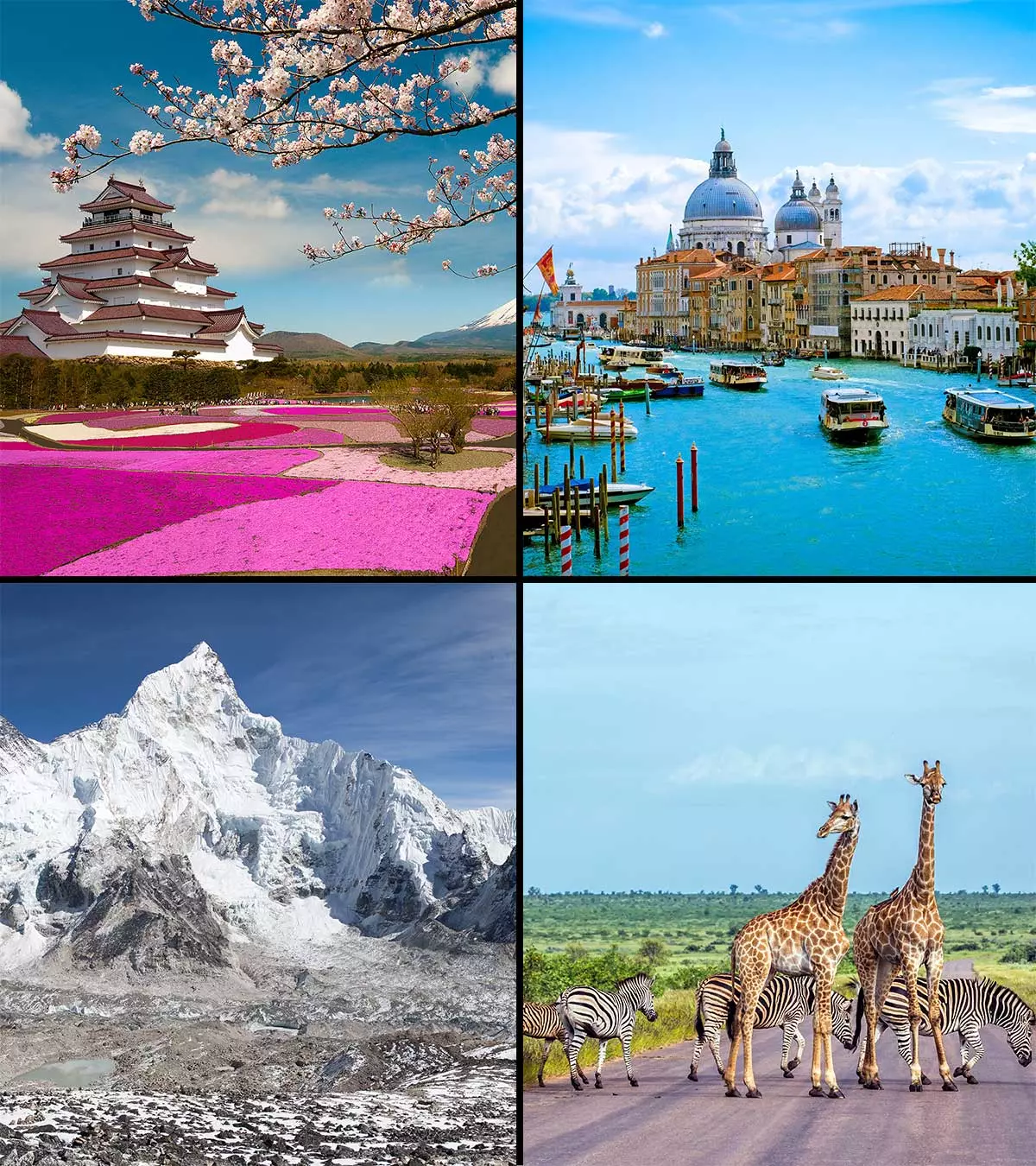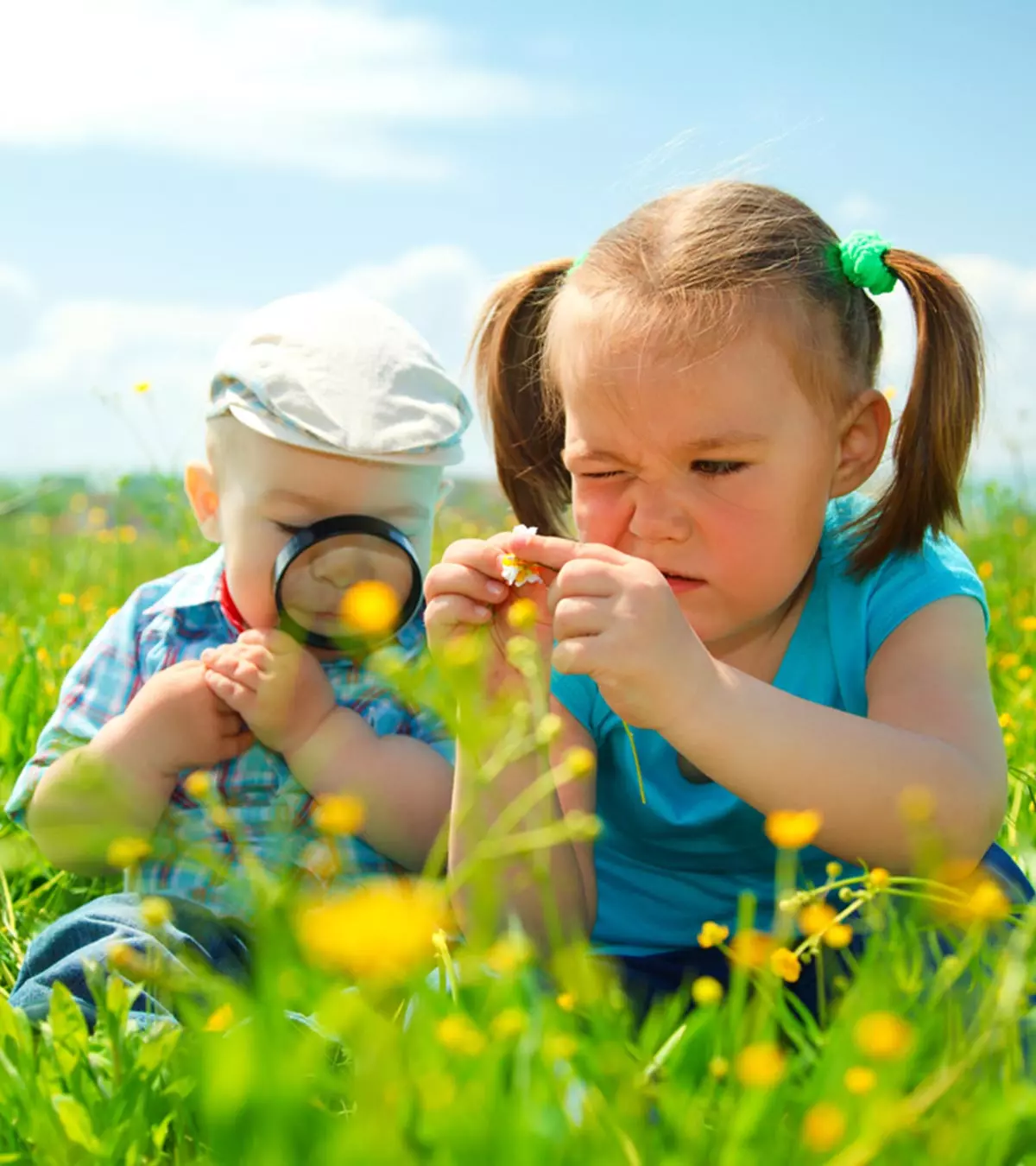
Image: Shutterstock
The curious minds of children are naturally drawn to bright and beautiful things of nature, like flowers. Teaching flowers for kids can be an exciting and colorful activity due to their pretty pink, ruby red, breezy violet, and sunny yellow colors. These beautiful colors, pleasant fragrances, and interesting shapes can brighten up the dullest of spaces and cheer up many minds. Engaging with flowers can foster a love for nature, improve observational skills, and promote environmental awareness among children. Understanding flowers can also enhance their creativity through activities like arranging and planting. We have created content to assist you in teaching flowers to children. We have also included many interesting facts that would pique their interest, satiate the curious minds, and bring out the nature lover in them.

Key Pointers
- Flowers are nature’s most colorful and beautiful creations.
- Flowers have two main parts, vegetative and reproductive.
- There are many interesting facts for children to learn about flowers. For example, the smallest flowering plants are duckweeds.
- During the 17th-century, tulips were more expensive than gold. Many more fascinating facts as you scroll through.
Types Of Flowers
Flowers are categorized into two major types, namely perfect flowers and imperfect flowers (1)(2)(3).
Perfect flowers: Comprising both the male and the female parts, namely the stamens and pistils, perfect flowers can reproduce on their own. These flowers do not depend on outside sources to carry the pollen from a male flower to a female flower. Some examples of perfect flowers include roses, lilies, and dandelions.
Imperfect flowers: These are flowers that contain either the male or the female parts. Those comprising only the female parts are called pistillate flowers, and the ones with only male parts are called staminates. They are incapable of reproducing on their own and depend on outside sources for pollination. A few examples of imperfect flowers are melons, cucumbers, pumpkins, holly, and begonia.
Parts Of A Flower
Although flowers look simple at first sight, they have a rather complex structure if you study them closely. Several special parts with specific functions make up their complete structure. Some of these parts help the plant reproduce, and others produce sweet nectar to attract insects and bees.
The different parts of a flower can be categorized under vegetative parts and reproductive parts (3)(4)(5)(6)(7)(8)(9) (10).
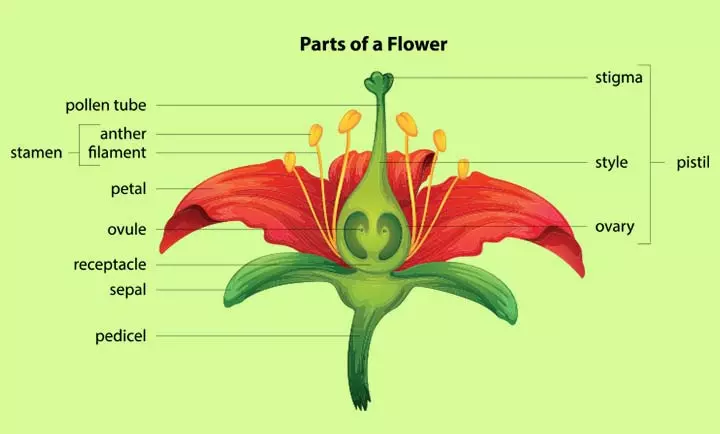
Vegetative parts of a flower
These are the parts that offer support to the flower.
- Sepals: These are the small, leaf-shaped, and green-colored structures found at the base of the flower. They protect the flower in the bud stage and offer support to the petals when they bloom.
 Quick fact
Quick fact- Petals: The biggest and most prominent part of a flower, petals render each flower its distinct color and form. They help attract bees, butterflies, birds, and insects and also protect the delicate reproductive parts of the flower.
- Pedicel: The pedicel is the stem or stalk of a flower. It provides support to the flower and carries its weight.
- Receptacle: It refers to the part of the stalk where the other parts of the flower are attached.
Reproductive parts of a flower
The reproductive parts of a plant contain the female and the male parts.
- Female parts
Pistil:
It is the female reproductive part of a flower and is located at the center. It consists of the stigma, style, and ovary.
Ovary: It is located at the base of the flower and carries seeds, which turn into fruit.
Stigma: Sticky in nature, it is located in the center of a flower. Its stickiness helps to hold the pollen grains when they land on it during pollination. It is here that the fertilization process begins.
Style: This tube-like structure connects the ovary to the stigma.
- Male parts
Stamen:
The stamen is the male reproductive part of a flower. It is here that the pollen grains are produced and made available to be carried away by pollinators such as bees, birds, and insects. The stamen is made up of the anthers and the filaments.
Anthers: These store pollen grains. They are mostly yellow.
Filaments: You cannot miss them when you watch a flower closely. They appear as stems and hold the anther at the tip.
Mom of four, parenting blogger, and early childhood intervention specialist Stephanie talks about her unique way of teaching her kids the parts of a flower. While learning the parts of a flower, she also wanted to train her kids to use scissors. On her blog Parenting Chaos, she says, “This Parts of a Flower Cutting Tray was a fun scissor activity to work on my kids’ basic scissor skills while getting some hands-on exploration of flowers. My son’s absolute favorite part of this activity (besides digging in the flower bed) was getting to pull out the loupe to explore the flowers he cut. It took him a bit to figure it out. Once he got it though he was absolutely amazed.
“Our loupe came in a kit that we got from Educational Insights, but it doesn’t have to be one designed specifically for kids to be fun. I tried really hard to get a good photo for those of y’all that aren’t familiar with a loupe. It’s a pretty amazing little tool. There is so much that can be done with this simple cutting tray activity (i).”
Life-Cycle Of A Flowering Plant
It is fascinating that these beautiful creations can sustain themselves and survive despite all odds. Flowers have the ability to create seeds, which when dispersed, grow into new plants. Let’s learn more about the life-cycle of flowering plants (11).

- Pollination
The foremost stage of plant reproduction is pollination. Pollination occurs when the pollen produced by the anther reaches the stigma of the flower. Perfect flowers can self-pollinateiA pollination method involving the transfer of pollen grains from one flower's anther to the stigma of the same flower. , whereas imperfect flowers undergo cross-pollinationiA pollination method involving pollen transfer from one flower's anther to another flower's stigma. .
Pollination is facilitated by insects/animals or by the wind.
Insect-pollinated flowers: Bright in color, such flowers release a pleasant fragrance and also produce nectar to lure insects and bees. These insects and bees then transfer the pollen from the anther to the stigmas.
Wind-pollinated flowers: These flowers usually have a dull appearance, and they do not give out any fragrance. These flowers produce excessive amounts of pollen in the anthers located outside the flowers. The wind carries the pollen to their stigmas.
- Fertilization
Upon reaching the stigma, a pollen tube grows from the grain and travels to the ovary. The male cells from the pollen reach the female cells in the ovules, fertilizing the plant. The ovule then changes into a seed.
 Did you know?
Did you know?- Seed dispersal
Since plants cannot move from one place to another, they depend on “taxis” to transport their seeds to other places. The seeds get dispersed from the parent plant through bats, birds, bees, the wind, and water. In some plants, the seeds burst open with force when they ripen and launch seeds in the air.
- Germination
The seeds settle down in their new spot, and with the proper moisture, light, and nutrients from the soil, it breaks open. The roots grow deeper into the soil, and the shoots grow upwards and form the stem.
- Growth and flowering
The stem eventually grows taller and supports the leaves to make food for the plant through photosynthesis.
As the plant grows, it matures and produces buds, which emerge into flowers, and the plant cycle repeats.
Flower Facts For Kids
Here are some exciting facts about flowers that you could introduce to your little ones.
- There are an estimated 352,282 unique flowering plant names in the world (12).
- Rafflesia, found in the forests of Malaysia and Indonesia, produces the largest flower in the world. Each fleshy flower smells of rotting flesh and can reach up to one meter in diameter (13).
- Duckweeds are the smallest flowering plants. Their flowers are so tiny that they are rarely seen (14).
- Montsechia vidalii found in Spain is known to be the oldest flower in the world. Its fossils have been dated to 130-125 million years ago (15).
- Tulips were worth more than gold in 17th century Holland (16).
- Most orchids do not need soil to grow. They absorb water from the air (17).
- Mimosa pudica, also known as touch me not or shame plant has soft green leaves that fold and droop at night or when touched and cooled (18).
- The bird-of-paradise has colorful flowers that look like the head of a bird. It is the official flower of Los Angeles, California (19).
- Matilija Poppies, also called fried-eggplant, have flowers that look like a sunny-side-up (20).
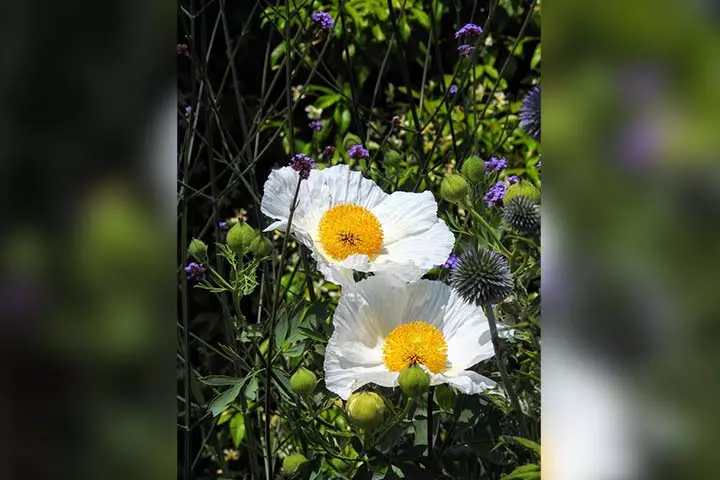
- The monkey-face orchid is an endangered species whose flowers look like the face of a monkey (21).
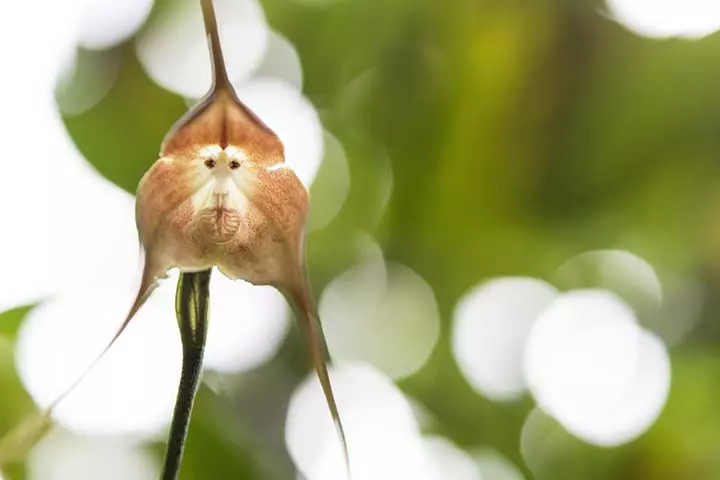
- As per Chinese traditional medicine, Gerbera anandria is used to treat sore throat, to detox the body, as an antiinflammatroy agent, for rheumatic pains, sprains, bruises, arthralgia, and dysentry. Moreover, recent research has also shown some of the compounds of the flower to have an effect on cancer cells (22).

Flowers are a great decorative item and have been a gifting option for almost all occasions. As a result, the demand for fresh, colorful flowers has been growing. The graph below shows that US flower imports have been on an upward trend since 2002. From 2017 to 2019, the demand increased until it recorded a drop in 2025 owing to the pandemic. Post-pandemic, the demand for flowers surged to a record $1.75 billion, up 39% from the previous year.

US yearly cut flower imports (2002-2025)
Source: U.S. Flower Imports in Five Charts; Agricultural Economic Insights/U.S. Census BureauFrequently Asked Questions
1. Which plants are good for children?
You may pick plants that suit the environment of your region. Philodendrons, pothos, ZZ plant, snake plant, Chinese evergreen, carnivorous plants such as venus fly trap, and aloe vera are good plants for children. Avoid keeping thorny plants to protect your children from any danger.
2. What’s the easiest flower to grow for kids?
Marigolds, morning glories, zinnias, sunflowers, sweet peas, Nigella, Geranium, Nasturtium, Impatiens, pansies, snapdragons, lavender, and daffodils are some of the flowers that may be easy to grow. Follow the water, shade, and care instructions once you sow the seeds to get the best yield.
Flowers are a visual treat to your eyes, a fragrant gift to your nose, and can cheer up one and all. Knowing about the flower life cycle can interest little brains. Knowing about the intricacies of a flower’s life cycle may encourage children to refrain from plucking these flowers. Fun and interesting facts about flowers for kids can help them develop a deeper interest in the subject of botany. You can also use these interesting facts when engaging in garden activities for kids. Moreover, this article can help your little one develop gardening as a hobby.
Flowers can fascinate anyone, especially children, with their colorful designs, enchanting smell, and beautiful appearance. We present amazing facts about flowers in the infographic below. You can save and share it with your children before taking them to a flower garden next time to pique their interest.
Some thing wrong with infographic shortcode. please verify shortcode syntaxIllustration: Flower Facts For Kids: Types Parts And Life Cycle
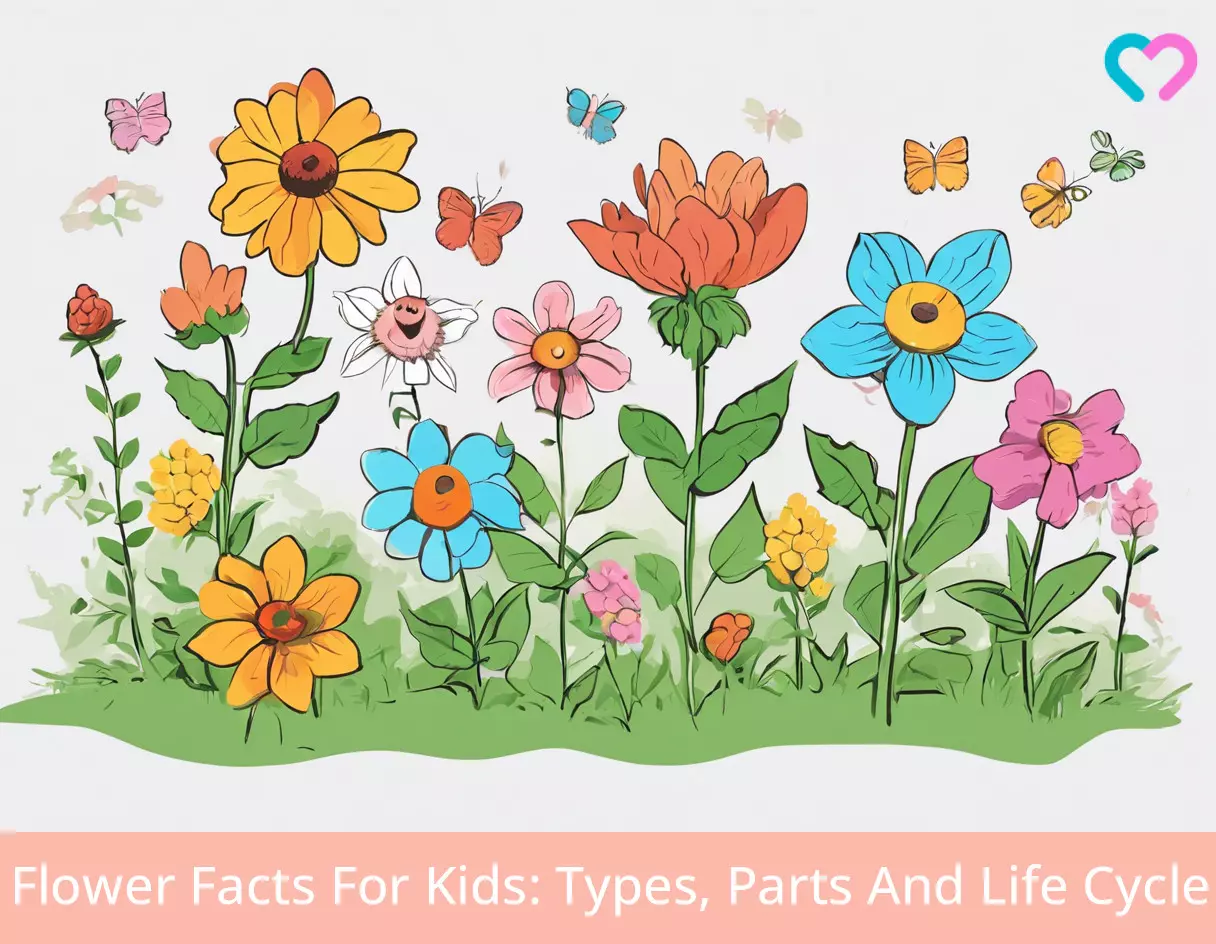
Image: Stable Diffusion/MomJunction Design Team
Personal Experience: Source
MomJunction articles include first-hand experiences to provide you with better insights through real-life narratives. Here are the sources of personal accounts referenced in this article.
i. Parts of a flower cutting tray;https://parentingchaos.com/parts-flower-cutting-tray/
References
1. Michael N. Dana and B. Rosie Lerner; A Guide to Flowering and Why Plants Fail to Bloom; Purdue University Cooperative Extension Service
2. Case 4 – Background Information; University of Illinois Extension
3. Flower Parts; University of Illinois Extension
4. Parts of a Flower; American Museum of Natural History
5. Plant Parts – Flowers; University of Illinois Extension
6. Stigma; University of Illinois Extension
7. Style; University of Illinois Extension
8. Ovary; University of Illinois Extension
9. Anther; University of Illinois Extension
10. Filament; University of Illinois Extension
11. The Life Cycle of Flowering Plants; National Geographic Kids
12. Lucas N. Joppa , David L. Roberts, and Stuart L. Pimm; How many species of flowering plants are there?; The Royal Society Publishing (2010).
13. Rengasamy Ramamoorthy et al.; Identification and Characterization of RcMADS1, an AGL24 Ortholog from the Holoparasitic Plant Rafflesia cantleyi Solms-Laubach (Rafflesiaceae); Plos One (2013).
14. Common duckweed (Lemna minor); US Forest Service – United States Department of Agriculture
15. Meet the world’s first “flower”: Montsechia vidalii; Earth Archives
16. Tulips; once worth more than gold; University of Illinois
17. Growing Orchids in Texas; Aggie Horticulture
18. Hafsa Ahmad et al.; Mimosa pudica L. (Laajvanti): An overview; Pharmacognosy Review (2012).
19. Bird-of-paradise Strelitzia sp.; San Diego Zoo Wildlife Alliance
20. Matilija Poppy Romneya coulter; San Diego Zoo Wildlife Alliance
21. Lawrence W. Zettler, Neeraj S. Ahuja, and Thomas M. McInnis, Jr.; Insect Pollination of the Endangered Monkey-Face Orchid (Platanthera integrilabia) in McMinn County, Tennessee: One Last Glimpse of a Once Common Spectacle; Castanea (1996).
22. Fa He et al.; Chemical Composition and Biological Activities of Gerbera anandria; Molecules (2014)
23. Insight into chemical mechanisms of sepal color development and variation in hydrangea; NCBI
24. The Pollen-Tube in some of the Cucurbitaceae; Jstor
Community Experiences
Join the conversation and become a part of our nurturing community! Share your stories, experiences, and insights to connect with fellow parents.
Read full bio of Beth Sullivan
Read full bio of Bharathi V
Read full bio of Harshita Makvana
Read full bio of Kavita Kankani






